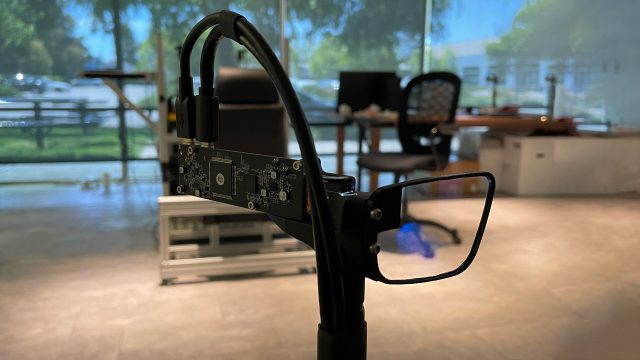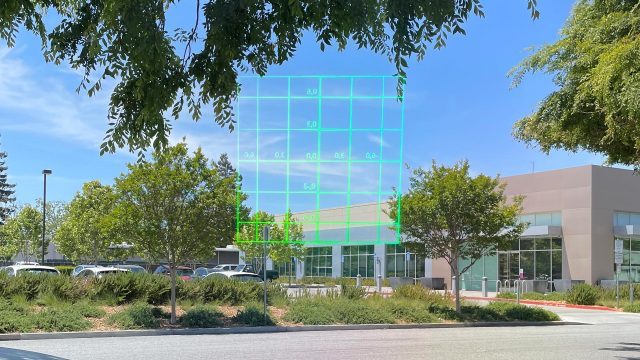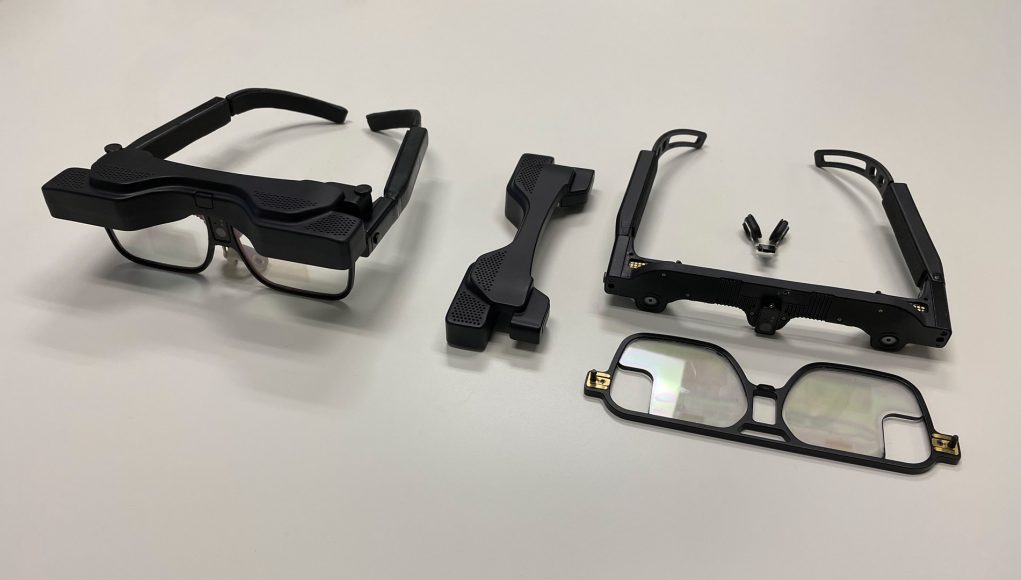DigiLens, creators of waveguide optics, today announced the Design v1, a modular reference headset which the company hopes will accelerate the development and consumerization of truly glasses-sized AR headsets. Road to VR got an exclusive hands-on demo of the Design v1 and the company’s latest waveguides.
DigiLens is one of several companies building waveguide optics and positioning them for use in XR. Waveguides allow for extremely compact near-eye optics which are no thicker than the lenses on a pair of glasses.
Seemingly frustrated that no company has yet created a pair of AR glasses suitable for mass adoption, DigiLens has set about building a modular reference design to help interested parties accelerate the time-to-market of affordable AR glasses. The device is called the Design v1, a fully standalone pair of AR glasses with Snapdragon XR2 and a 50° diagonal field of view.
“Design v1 is brighter, lighter and more capable than any other waveguide based XR device on the market. Our strategy is to empower the forward leaning XR companies in the ecosystem to capitalize on the strengths of an emerging horizontal market,” says Chris Pickett, CEO of DigiLens. “We are creating an XR blueprint for the ecosystem to take, add to and adapt as needed for their individual markets and their unique XR software development needs. Expanding the pool of experts and democratizing ideas across the spectrum is what the market has missed to date.”
The Design v1 AR glasses are comprised of three core modular parts:
- Frame: containing compute, batteries, and sensors
- Optics: featuring the company’s waveguides
- Display module: containing the display and light source
These parts snap together in a matter of seconds, without tools, as easily as Legos. The idea behind Design v1 is to give large tech companies a customizable starting point for building a pair of AR glasses that fits their productization needs. Here’s a look at the specs of the base unit:
| DigiLens Design v1 Specs | |
| Resolution | 1,280 x 720 (0.9MP) per-eye, DLP |
| Refresh Rate | 60Hz, 72Hz, 90Hz |
| Lenses | DigiLens waveguide |
| Field-of-view | 44° x 25° (50° diagonal) |
| Processor | Snapdragon XR2 |
| RAM | 6GB |
| Storage | 128GB |
| Connectors | USB-C |
| Tracking | Dual on-board cameras (no external beacons) |
| Input | Gaze |
| Audio | In-frame speakers |
| Microphone | Yes |
| Cameras | 8MP RGB center |
| Wireless | Wi-Fi 6, Bluetooth |
Bright as Daylight
While the modular design is interesting, DigiLens isn’t the only game in town with a reference design for AR glasses. So what makes the company think theirs is the best offering out there?
Naturally, it comes down to their waveguides, which are indeed some of the best AR optics available today.
It’s not just that waveguides can be truly the thickness of the lenses on a pair of glasses—and get just as close to your eye—they’re also highly transparent and actually capable of looking like glasses, rather than sunglasses as is the case with many of the AR headsets available today which need to dim incoming light to account for low brightness.

On the other hand, DigiLens boasts of having 300 nits per lumen brightness, and the demo to back it up. I got to visit the company’s Silicon Valley office for an exclusive look at its latest optics. Before trying on the Design v1 itself, the company sat me outside on a sunny afternoon and showed me their Crystal 30G optic (which has just a single color channel, green) connected to a compact board containing the display and light source.
After picking up the optic and looking through it, I could see the image clearly, even when set against the bright blue sky. That’s pretty impressive considering it can still sometimes be hard to see smartphones in direct sunlight (smartphones commonly have sub 1,000 nit brightness; DigiLens says this demo was 3,000 nits). I was even able to take a perfectly good photo through the lens with my phone.

While the Design v1 isn’t this bright just yet, the company pointed out that—assuming the same light source—there’s a range of tradeoffs among waveguides between color channels, field-of-view, and brightness. Part of why they’re building the Design v1 with modular optics is so partners can easily snap on a different optic that’s specific to their use-case, whether that be optimizing for a wide field-of-view or for maximum brightness.







